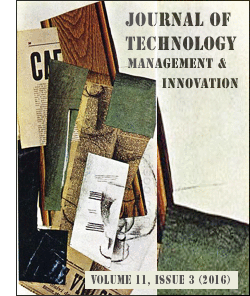World-First Innovations in an Open Innovation Context
DOI:
https://doi.org/10.4067/S0718-27242016000300006Keywords:
open innovation, world-first innovation, invention, imitation, appropriation instrumentsAbstract
This study contributes to the current literature on open innovation by analysing the effects of open innovation activities on the introduction of new-to-the-world innovations versus imitation. We base our analysis on data provided by the Eurostat Community Innovation Survey (CIS) carried out in Germany in 2012, which for the first time made a distinction between world–first innovation and imitation. We use both logit models and CHAID trees. The results of both analyses show that traditional in-house innovation and patents continue to make the largest contribution to world-first innovation in the so-called open-innovation era, while some specific open innovation activities contribute to a lesser extent: cooperation with customers, information from universities, cooperation with suppliers, and acquisition of machinery. Thus, promoting open innovation can be advantageous not only for imitative innovation but also for introducing world-first innovations. The European Commission should continue to include open innovation policies in its agenda.Downloads
Download data is not yet available.
Downloads
Published
2016-10-11
How to Cite
Hochleitner, F., Arbussà, A., & Coenders, G. (2016). World-First Innovations in an Open Innovation Context. Journal of Technology Management & Innovation, 11(3), 50–58. https://doi.org/10.4067/S0718-27242016000300006
Issue
Section
Research Articles
License
Copyright (c) 2016 Journal of Technology Management & Innovation

This work is licensed under a Creative Commons Attribution-ShareAlike 4.0 International License.












